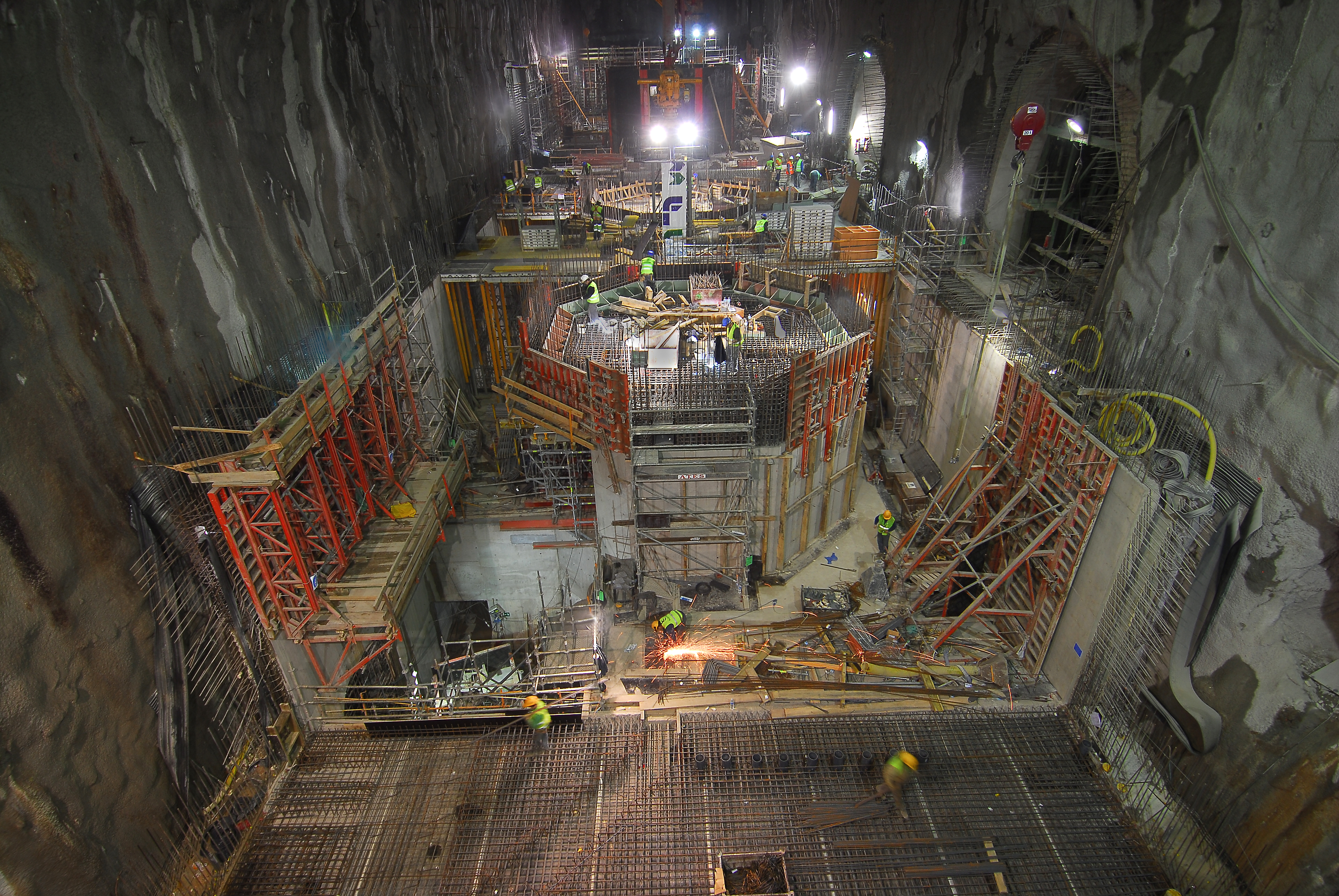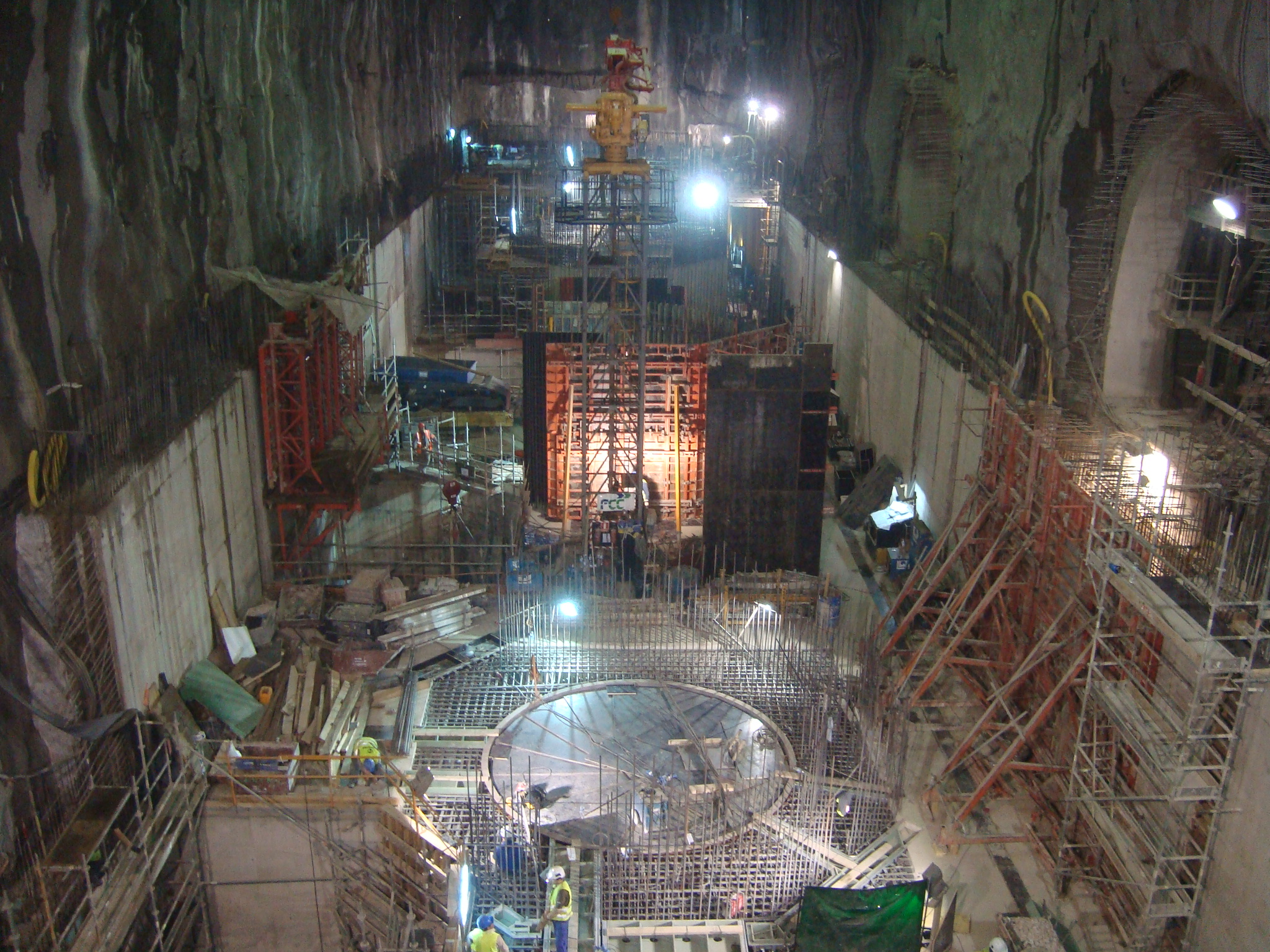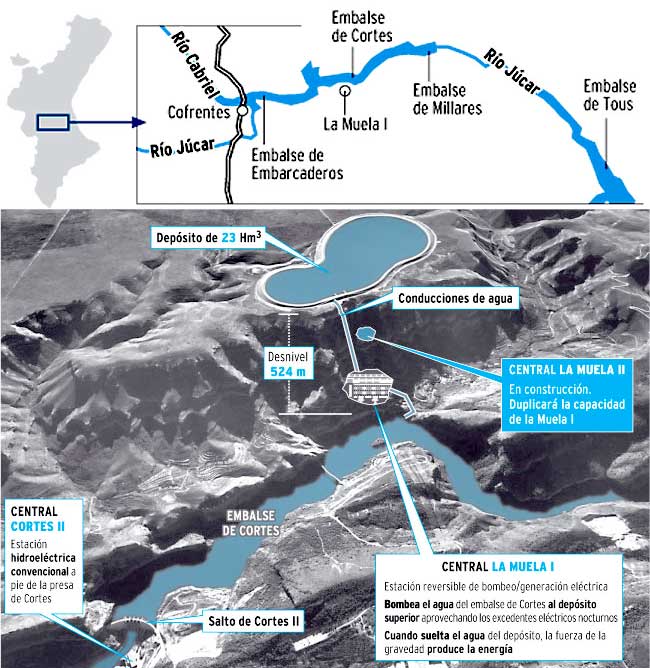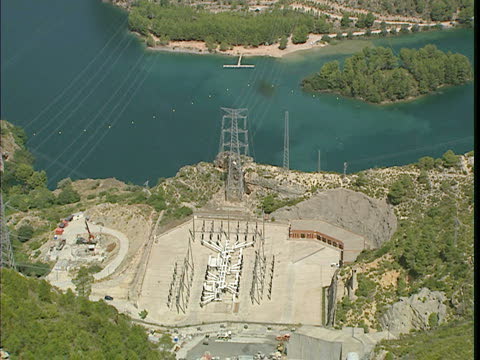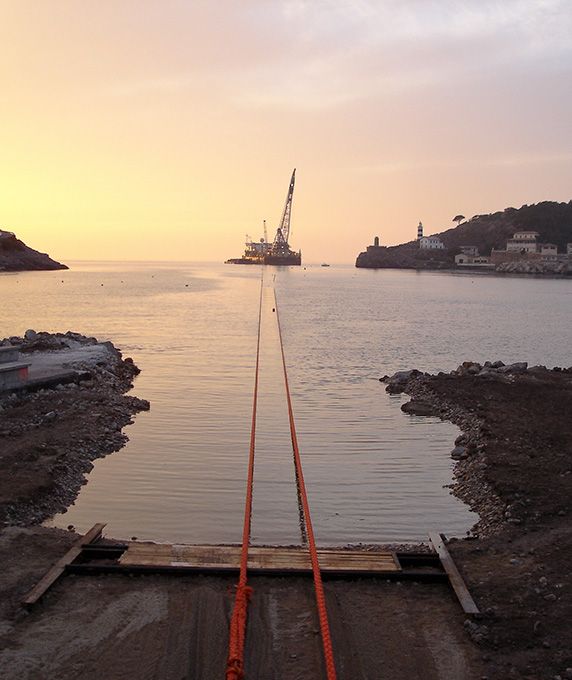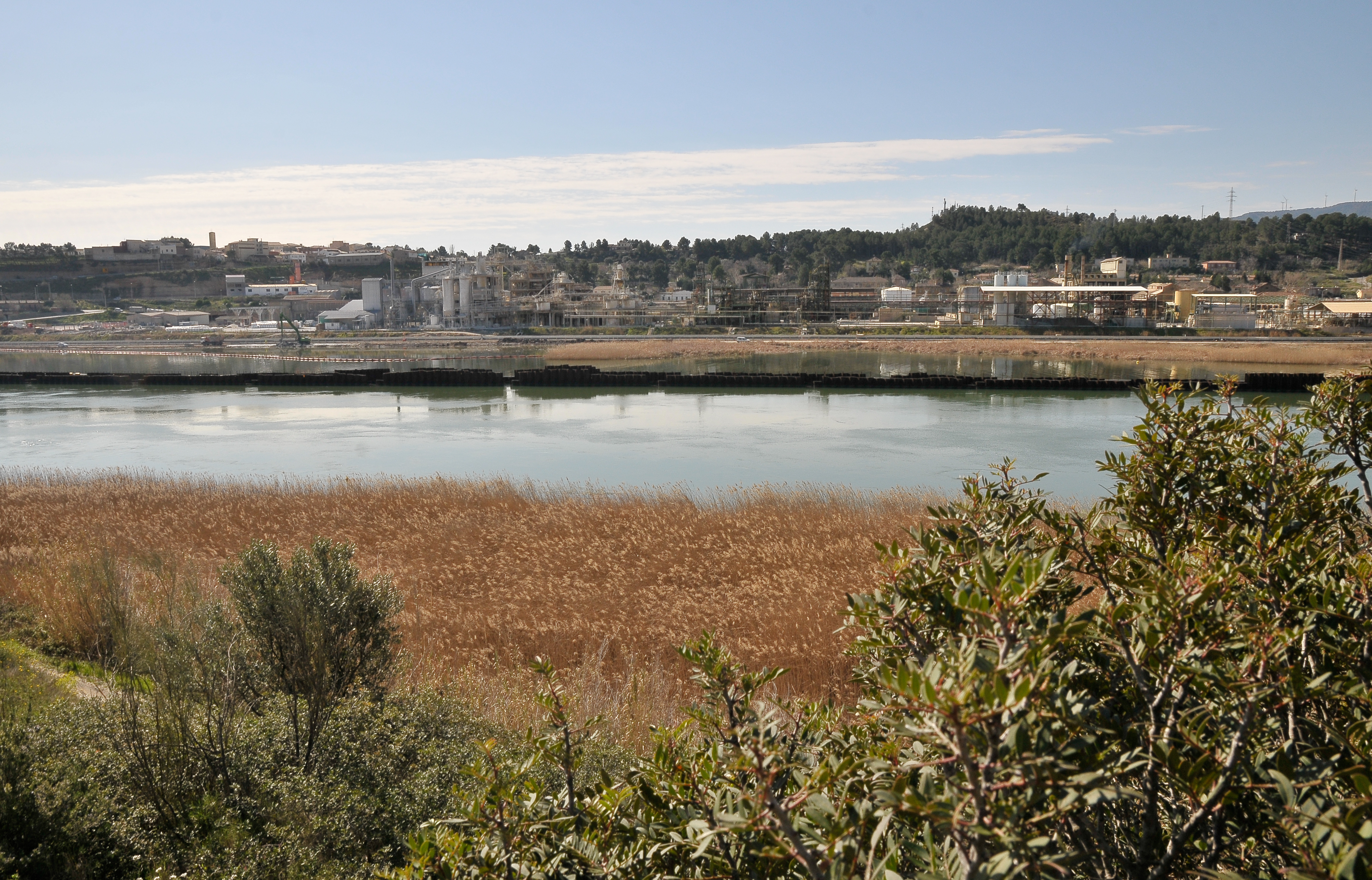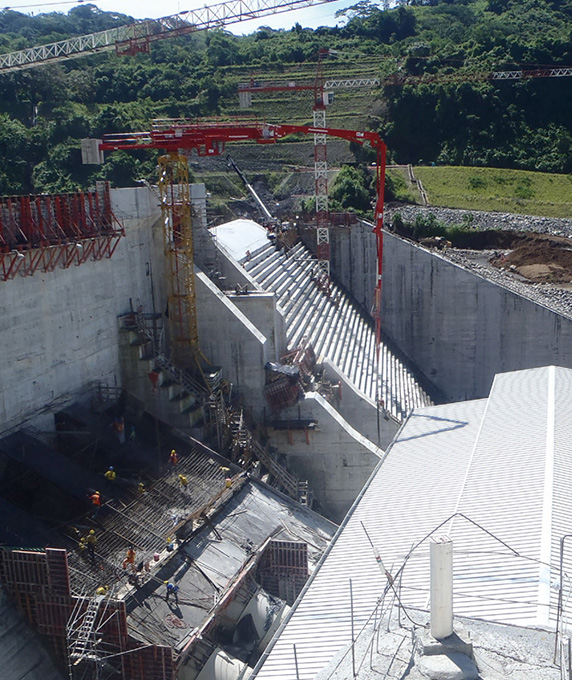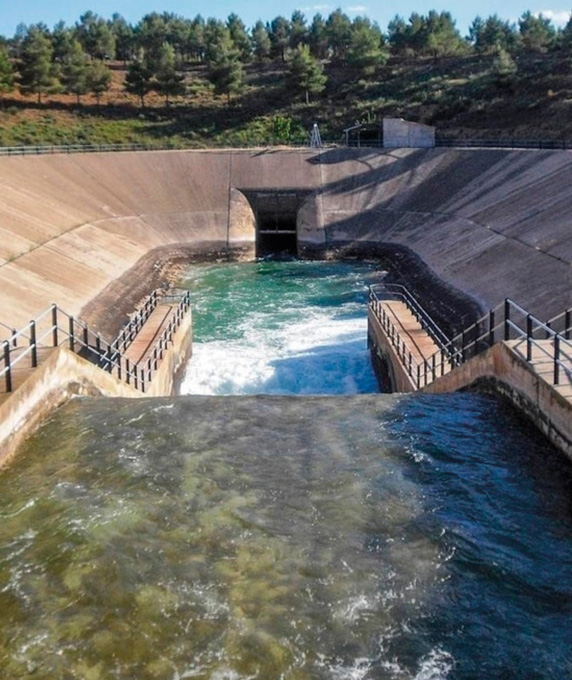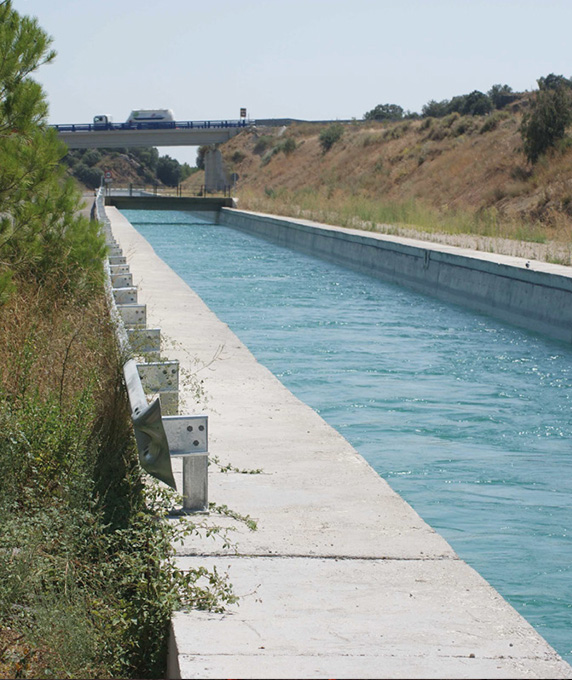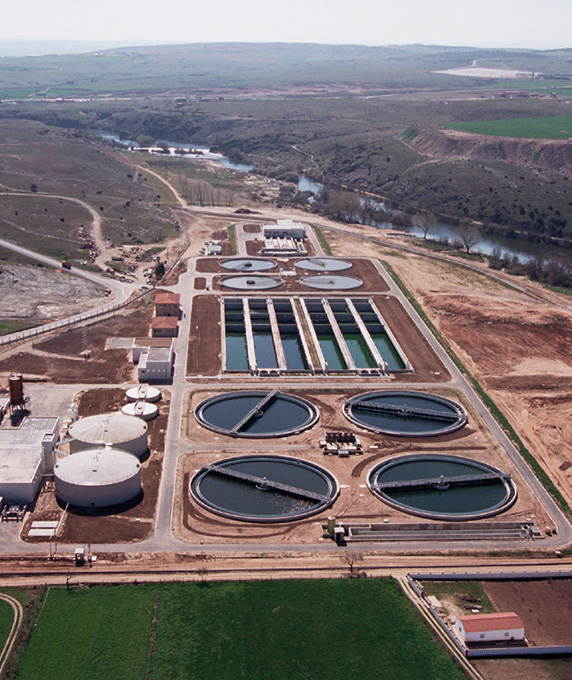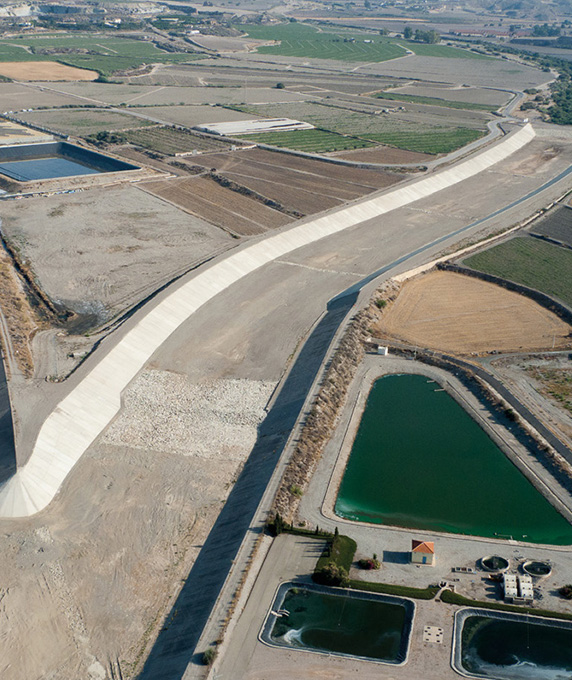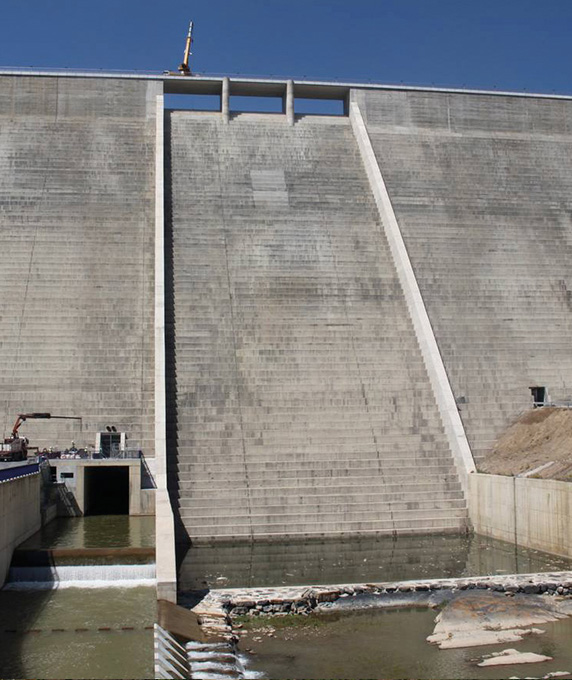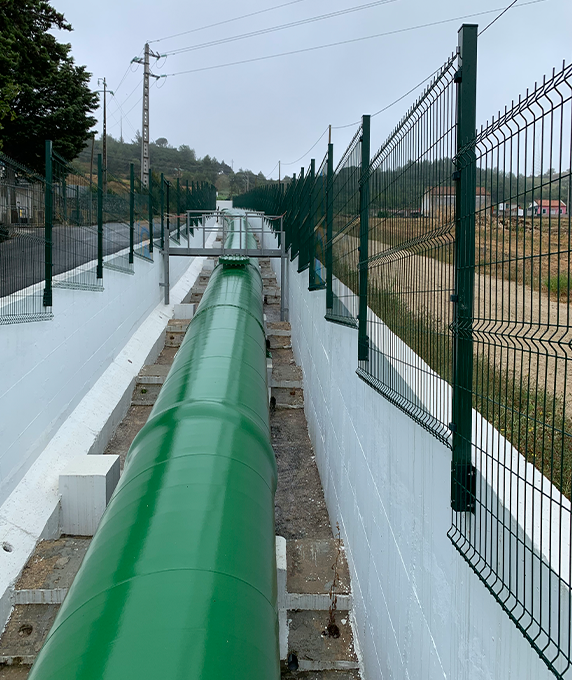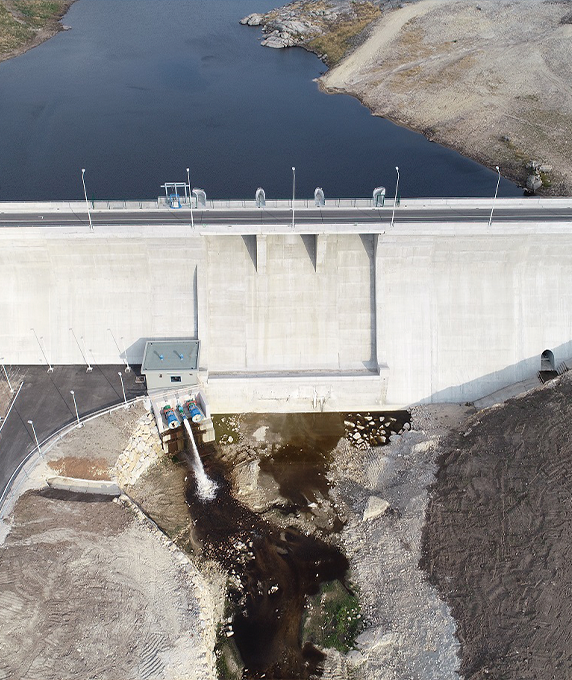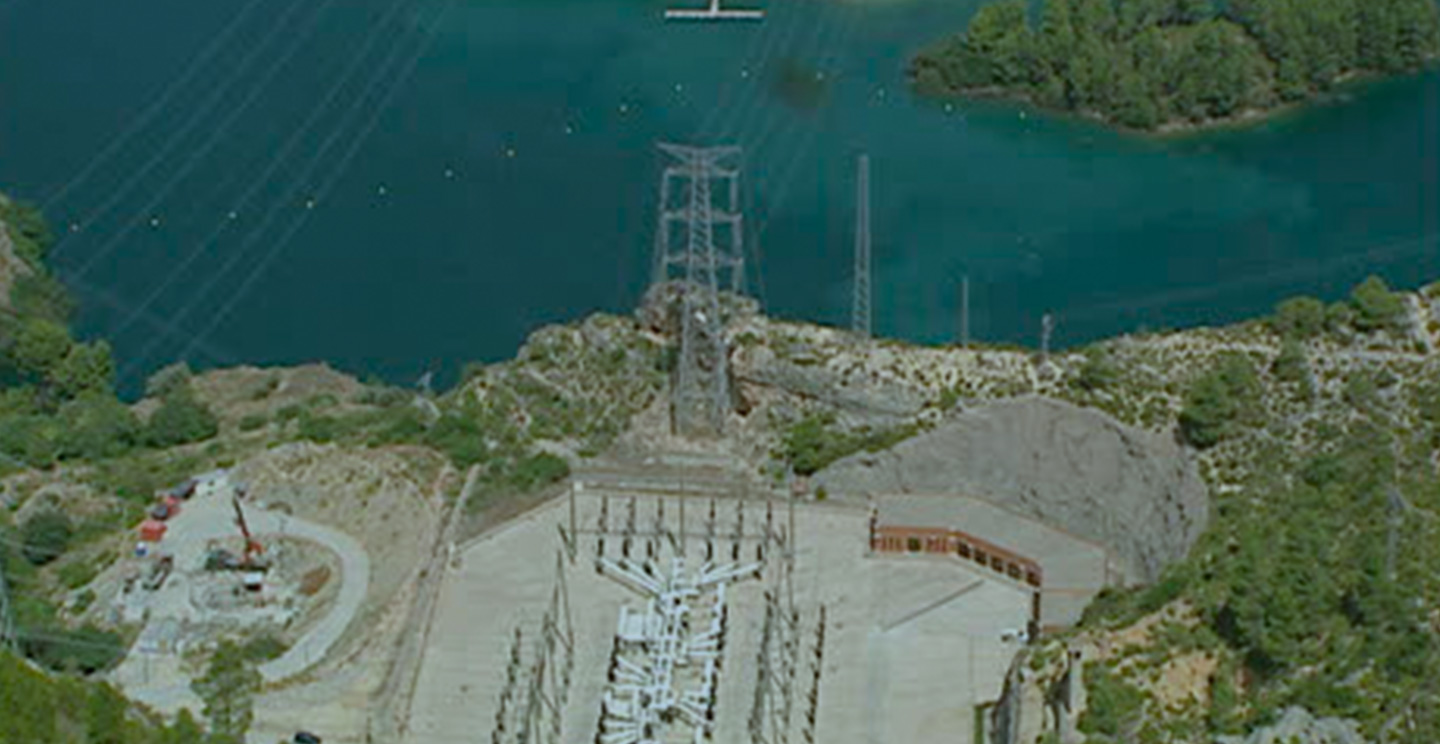
Type of work
Hydraulic works
Hidroelectric power station La Muela II
Spain
This is the largest hydroelectric pumping plant in Europe.
This is the largest hydroelectric pumping plant in Europe.
Description
The works are located on the right bank of the River Júcar in the Municipal Terminus of Cortes de Pallás, in Valencia.
The project consisted of the execution of the excavation, support and concreting of the various caverns, shafts, galleries and foundations for the La Muela II hydroelectric power station construction. The central cavern has a dome that is 117 metres long, 19.85 metres wide and 50 metres high constructed with reinforced concrete and organised into three main floors: The access floor, the alternator floor and the turbine floor.
The area containing the transformers was constructed in the same way, but with dimensions of 81 x 19 and 20 x 18 metres.
The communicating gallery between the power stations joins La Muela I and II and consists of two galleries that are intersected by an orthogonal crossing.
The aspiration system is made up of four 3.50-metre diameter galleries that are lined with reinforced concrete.
The connection between the drainage shafts for both power stations is 142 metres long.
The 20 kV service gallery connects the power station access tunnel to the cable shaft. It is 67 metres long, 4.5 metres wide and 5.50 metres high.
The piping and cable gallery crosses the transformer cavern at its lowest elevation and on the left, communicates with the central cavern and on the right, with the access gallery to the aspiration conduits.
Highlights
- It is considered the largest pumping hydroelectric power station in Europe.
- An underground cavern that is more than 115 metres long.
- It can generate 1,625 GW/h.
- Because of the solid rock characteristics, it was not excavated at full section, but instead three galleries were executed longitudinally to the cavern.
